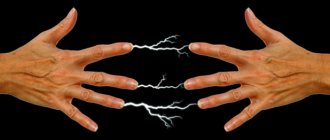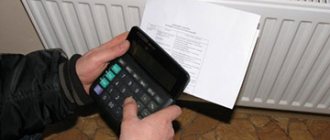When electric charges move freely through a conductor, it is called electric current. If they stop without moving and begin to accumulate on something, we should talk about static electricity. In accordance with GOST, statics is the totality of the occurrence, preservation and free accumulation of an electric charge on the outer surface of dielectrified materials or on insulators.
Static electricity is the accumulation of electrical charges
What it is
All people are familiar with static electricity. This is a set of phenomena that are associated with the emergence, conservation and free accumulation of electric charge. The latter occurs on the surface of a dielectric that does not conduct current well, or on an insulated conductor that does not have access to direct current.
Everyone has encountered static electricity in everyday life.
The appearance of static electricity is due to the lack of charge movement. Electric charges moving freely along a conductor are electric current. If these charges stop in one place, it is called static electricity.
In any substance, positive and negative particles of atoms are in balance, their number is equal. In this case, negatively charged electrons can move between atoms, forming a positive or negative charge. This contributes to the formation of a static unstable electric field.
Static is unpleasant, but not dangerous
Important! Static electricity, its occurrence and methods of protection are discussed in GOST 17.1.018-79.
History of the study of the phenomenon
Oh, what spectacular and fascinating experiences these were! How delightfully the ladies screamed and turned pale when the learned demonstrators, filled with importance, extracted long bluish-violet sparks from the discharged gentlemen, when by simply raising their hands they ignited alcohol and handfuls of gunpowder, when several dozen gentlemen, holding hands, received a stunning blow, costing only two extreme touch a seemingly harmless glass jar...
All these amazing effects were caused by ridiculously simple means: a glass rod rubbed with dry fur, rotating glass balls and cylinders rubbing against the palms of a person isolated from the floor. The general enthusiasm for electricity from friction in the second half of the 18th century can only be compared with the enthusiasm caused a hundred years earlier by the discovery of atmospheric pressure.
According to the definition, static electricity as an effect is a dangerous phenomenon that threatens the health and practical activities of any person. To comprehend and understand its nature, we should remember that all known substances consist of molecules, and the latter are made of tiny particles called atoms. At their center is a nucleus with protons and neutrons, and groups of electrons rotate around it in different orbits. The total charge of these particles corresponds to the same indicator for protons, so the atom as a whole is neutral.
Even the most sober scientists succumbed to the general intoxication. Just as they once tried to reduce everything to the action of atmospheric pressure, so now they have managed to see the manifestation of electricity in the rotation of the planets around the Sun, and in the occurrence of earthquakes, and in the course of many diseases. It is no coincidence that the years 1750–1780 went down in the history of physics as the “period of electricity from friction.”
Atom image
The end of this period was marked by “the creation of a device that is similar in its actions to a Leyden jar... but which, however, operates continuously, that is, its charge is restored by itself after each discharge.” This is how in 1799 A. Volta described his electric battery - a great invention that dramatically changed the entire course of electrical research.
The voltaic column, which made it possible to obtain relatively large currents at low voltages, focused the attention of scientists on the magnetic, mechanical and thermal effects of electric current, which by the end of the 19th century already formed the basis of all electrical engineering. But it was only in the 20th century that interest in the once-abandoned “friction electricity” began to revive. And the reason for this revival was an important invention made at the turn of the century - the corona discharge...
How to get
It’s easy to get static electricity at home:
- It is necessary to put on dry, clean wool socks (it is advisable to preheat them on a radiator) and walk on a nylon carpet without lifting your feet. You shouldn’t shuffle too much, as the discharge will happen faster than necessary. To receive a charge, you must touch a metal object or person;
The easiest way is to shuffle your feet in socks on the carpet.
Important! When checking, you should not touch the electronics, as the charge can damage the chips - statistically, this is the cause of almost 40% of breakdowns.
You might be interested in this. Features of SHDUP U4
- You need to take a balloon (not made of foil) and inflate it. Then take a woolen object and rub the ball for 10 seconds. You can also place the ball on your head and rub it on your hair. To check, you need to bring the ball to an empty aluminum can lying on its side: if it starts to roll away, the charge has accumulated. To discharge, you need to rub the ball on the metal for a few seconds;
- To demonstrate and check the charge more clearly, you can make a special electroscope. You will need to take a glass made of foam polystyrene, make 2 holes in the bottom and thread a tube through them so that both ends are outside. You need to attach 4 small clay balls to the top edge with tape at an equal distance from each other, turn the glass over and place it upside down in the center of an aluminum baking sheet. Next, you need to take a piece of aluminum and roll a ball out of it, cut the thread (its length should be 2-3 times greater than the height from the edge of the straw to the baking sheet) and tie the ball to it. The second end must be tied to both ends of the tube, and the latter must be adjusted so that the aluminum ball hangs almost to the baking sheet, but does not touch it. If you bring a charged ball to the ball, the ball will be drawn towards it.
Another way is to rub the inflated balloon on your hair.
Causes
At the molecular level, stress occurs when surfaces of different materials collide and ions and electrons from the surfaces begin to redistribute. The greater the surface area and the applied forces, the higher the degree of electrification.
The main cause of charge is friction
There are several reasons for the occurrence and accumulation of electrostatic voltage:
- Contact (friction, winding, unwinding) of 2 different materials with subsequent separation: for example, friction of woolen fabric on a rubber ball;
- Sudden temperature changes;
- Dry air: with a humidity of more than 80%, static electricity does not form, since water conducts current well;
- Presence of radiation, x-rays or UV radiation;
- A charge is also generated during the operation of some paper machines: when cutting or cutting;
- Static can occur before or during a thunderstorm. A discharge occurs between 2 clouds or between a cloud and the ground; when lightning strikes a lightning rod, electricity goes into the soil.
You might be interested in Features of measuring illumination in lux
A clear example of static voltage is a thunderstorm.
Electrostatic charge protection methods
To protect employees, the methods listed in the relevant GOSTs are used. It is especially important to provide reliable protection in industries where explosive materials are used. After all, static electricity can cause a spark discharge, and soon after that it will be difficult to extinguish the fire.
Therefore, special attention is paid to neutralizing electrostatic charges on the human body. The clothing and materials used in this case serve as protection, and at the same time they are selected so that they comply with GOST, which, in particular, states that work robes made of synthetic fabric can quickly be charged to a potential of 15 kV, and through the body of a person dressed in such a robe will carry 3 µA. Therefore, natural or mixed fabrics are more often used for clothing. Some industries use additional protective equipment - these are special grounded rings and bracelets, and other devices for protecting hands. Their resistance is indicated in the documentation - it must correspond to the standard.
What is the danger of static voltage
The main danger is uncontrolled electric shock. In everyday life, this is practically harmless: for example, when removing a woolen sweater, a person will get an electric shock, but the strength of this charge will be extremely small.
When exposed to an electric field of increased intensity for a long time, a person may experience health problems: headaches, sleep disturbances, irritability, disruption of the cardiovascular and nervous systems.
A strong enough discharge can cause a fire
The danger of static voltage is much higher in production and when transporting flammable substances: with a strong discharge, they can explode or catch fire. For example, dust from dielectric material can accumulate in ventilation and hoods, which easily flares up and flares up due to the constant supply of air. During transportation, electricity can accumulate when pumping or draining liquids, even due to splashing while driving.
Important! At home, it is useful to “ground yourself”, for example, by walking barefoot.
Page not found
A
Arcotec (Germany) –
coronation station
ADSI (USA) – digital printing presses
Airtrim (USA) –
flash removal systems
Allison System Corporation (USA) – plastic squeegee and composite squeegee for flexo printing
Airmat (France) – pneumatic shafts and couplings
Araytech (France) – UV dryers and UV lamps
Aeroterm (Czech Republic) -UV drying for varnishing machines and UV
AB Kelva (Sweden) – web cleaning systems, adhesive and polymer rollers
AkeBoose (Sweden) –
chamber and doctor blade systems
B
Bar Graphic Machinery Ltd (UK) – machines for rewinding, inspection and cutting of label materials
Bilstein (Germany) – slitting knives
Bruno Unger GmbH (Germany) – doctor blade, slitting knives, cutting knives
BST (Germany) – inspection and video monitoring systems for printing processes
C
Caresonic™ (UK) –
ultrasonic cleaning systems
Cheshire Anilox Technology (UK) – screen rollers and screen sleeves
Convertech (India) –
squeegee blade
D
Durham Duplex (UK)
– production knives and blades
Dienes (Germany)
– slitting knives
Double Ju International Ltd (Germany)
– production of devices for lifting, turning over and tipping rolls
DPL Industri (Denmark) –
UV dryers and components for UV dryers
F
Fife T idland (Germany) – pneumatic shafts
FST ( Germany)
– form rollers, magnetic rollers, hot stamping cylinders
Ferrarini & Benelli srl (Italy) – coronation stations
Flexocleaners.com (USA) – cleaning products for anilox and printing machines
G
GEW (Great Britain) – UV lamps, components for UV lamps, UV dryers
H
Hunkeler Systeme AG (Switzerland) – presses for paper waste
K
Kampf (Germany) – blades and knives for slitter rewinders
Karl Wenk GmbH (Germany) – embossing rollers
M
Mendel RG-Systems GmbH (Germany)
– machines for cutting and embossing materials, embossing shafts, stamps for cutting plates
Metacod AG (Switzerland) – knives for perforating plastic and aluminum plugs
P
Perfecta (Germany) – spare parts and knives
Polywest Kunststofftechnik (Germany) –
mold sleeves
Pizzolato Srl (Italy) – fluorocutting machines (fluorocutters)
R
RK Print (UK) – proof printing tools and proof printing equipment
Roto Metrics (Germany) – plate rollers, magnetic rollers
S
Spilker (Germany) –
form rollers, magnetic rollers
Sigloch Kolbus (Germany) – spare parts for bookbinding machines
Soma (Czech Republic) –
production of printing machines, laminators, cutting machines.
T
Teknek (UK) –
Printing web cleaning systems
Tectonic (UK) –
video inspection systems and equipment for mounting cliches
Tandler (Germany) – gearboxes for printing machines
TECHNI FORM (France) –
die cutting plates
TOOL-TEMP AG (Switzerland) –
heating cabinets
U
uv-technik meyer gmbh (Germany) –
UV dryers, UV lamps, components for UV dryers
V
Vetaphone (Denmark) –
crowning systems
W
Westland (Germany) –
printing rollers for offset machines
Weinert & Fisher (Germany) –
spare parts
Western Quartz (USA) –
UV lamps
Y
Yamada (Japan)
– pneumatic pumps.
F
Flexo-Service (Russia) –
gland seals (end plugs), stops for the laminator, fluoroplastic doctor blades, consumables for flexography
Security measures
At home, you can protect yourself from static by using the following measures:
- Humidify the air and ventilate the rooms every day;
- Regularly carry out wet cleaning to reduce the amount of dust and use special antistatic brushes;
Using a brush helps relieve accumulated tension.
- If possible, use furniture made from materials that remove static: special linoleum, wood;
- Do not pet animals in too dry air or comb them with wooden or metal brushes - the plastic is highly electrified;
- Use antistatic sprays for clothing, remove woolen items slowly to reduce friction;
- An anti-static strip should be placed on the underside of the vehicle to reduce the formation of static.
In production, electrostatic voltage can be reduced by reducing operating speed, using special materials and grounding. Also, according to GOST, the energy of charge accumulation on the surface of objects should not exceed 40% of the lowest ignition energy.
Precautionary measures must be taken in production
Static electricity is considered by many to be harmless, although not particularly pleasant. However, everything depends on the strength of the charge: in industry or when transporting large quantities of flammable liquids, the accumulated discharge can be very strong and lead to a fire.
You may be interested in this Determination of short circuit current
What protection measures are used
There are quite strict rules in this area. Methods for removing static are regulated by various documents, including various GOSTs. Means of protection against static are listed in GOST 12.4.124 83. There, in particular, it is noted that all protective means can be group and individual. The management of the enterprise must provide its employees with all the means of protection provided for in regulatory documents.
Group protection means:
- grounding;
- neutralizers;
- humidifying devices;
- anti-electrostatic substances;
- protective screens.
Grounding is carried out for all types of equipment; the enterprise also organizes grounding zones and working platforms of the appropriate type. Other items should also be grounded, including door handles or stair handrails. Shielding devices must also be grounded.
Neutralizers come in different types - induction, high-voltage, beam, etc. The most popular are ionizing devices such as air guns and power supplies. Their characteristics are selected for each specific case. Humidifying devices prevent the air from drying out, that is, in this case, conditions for a charge to occur simply do not exist.
Anti-electrostatic agents are usually produced in the form of liquids for surface treatment of materials. The same GOST establishes requirements for the maximum concentration of such substances in production.
Personal protective equipment includes protective clothing and shoes with conductive soles, which will be discussed below.











